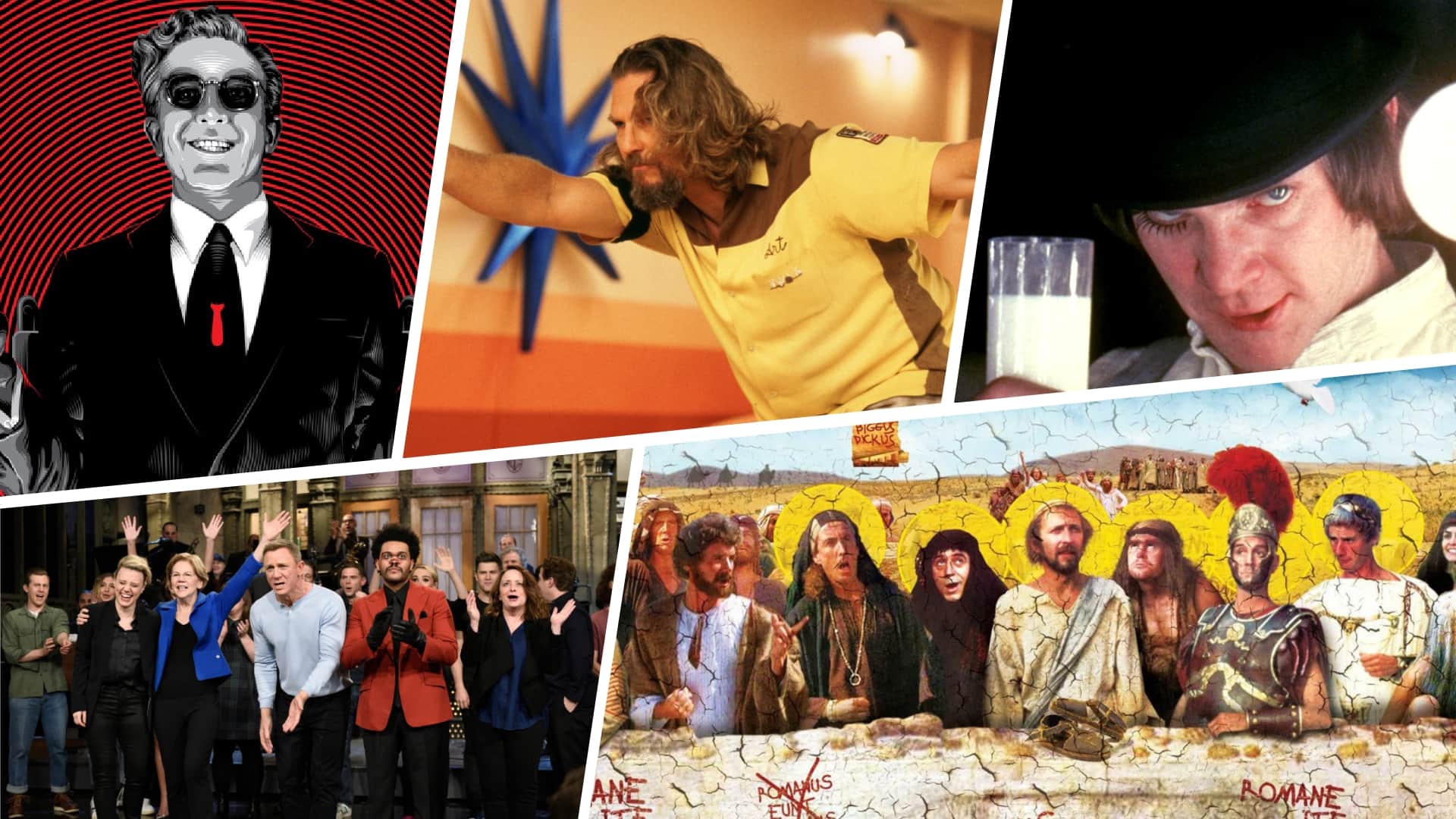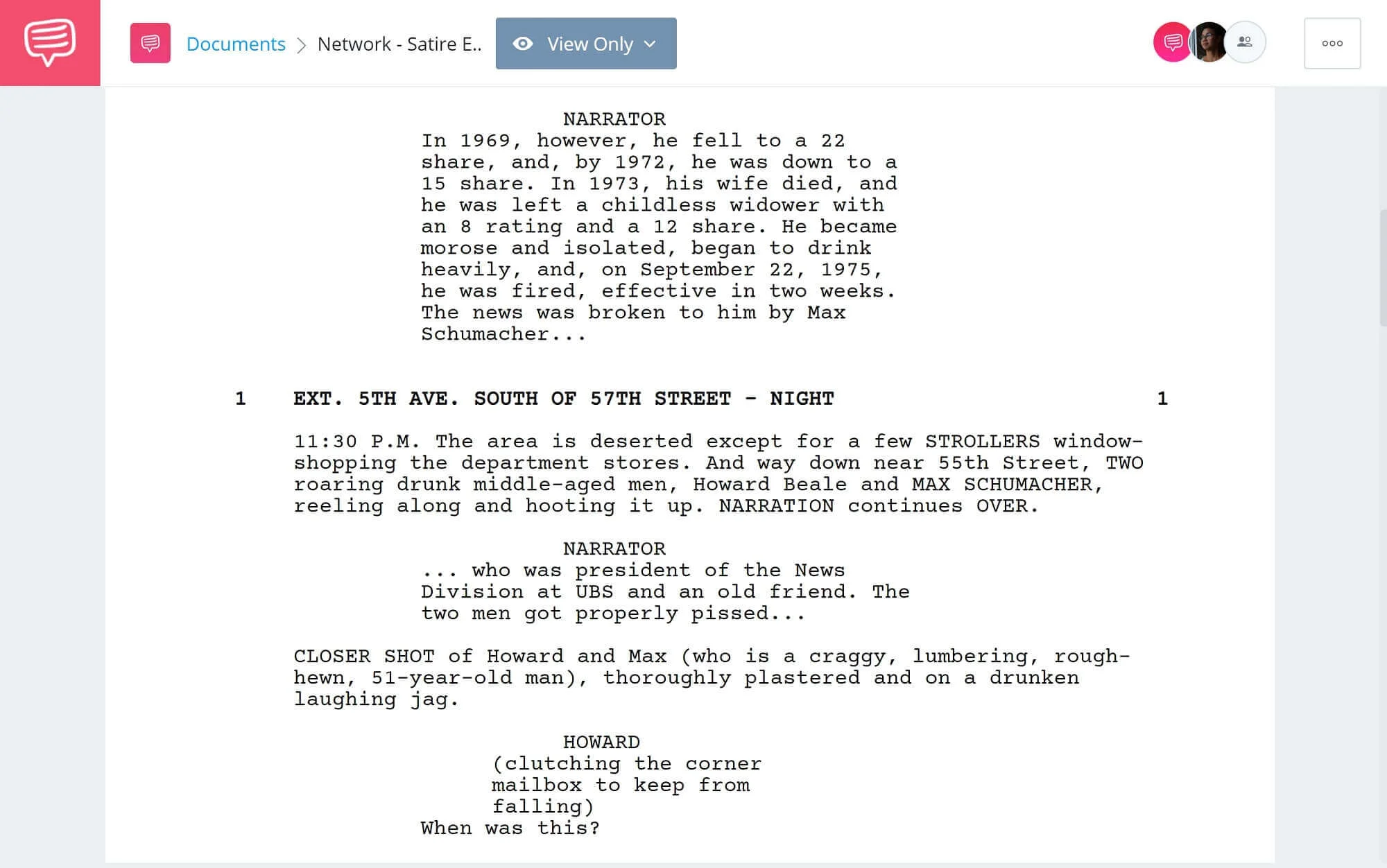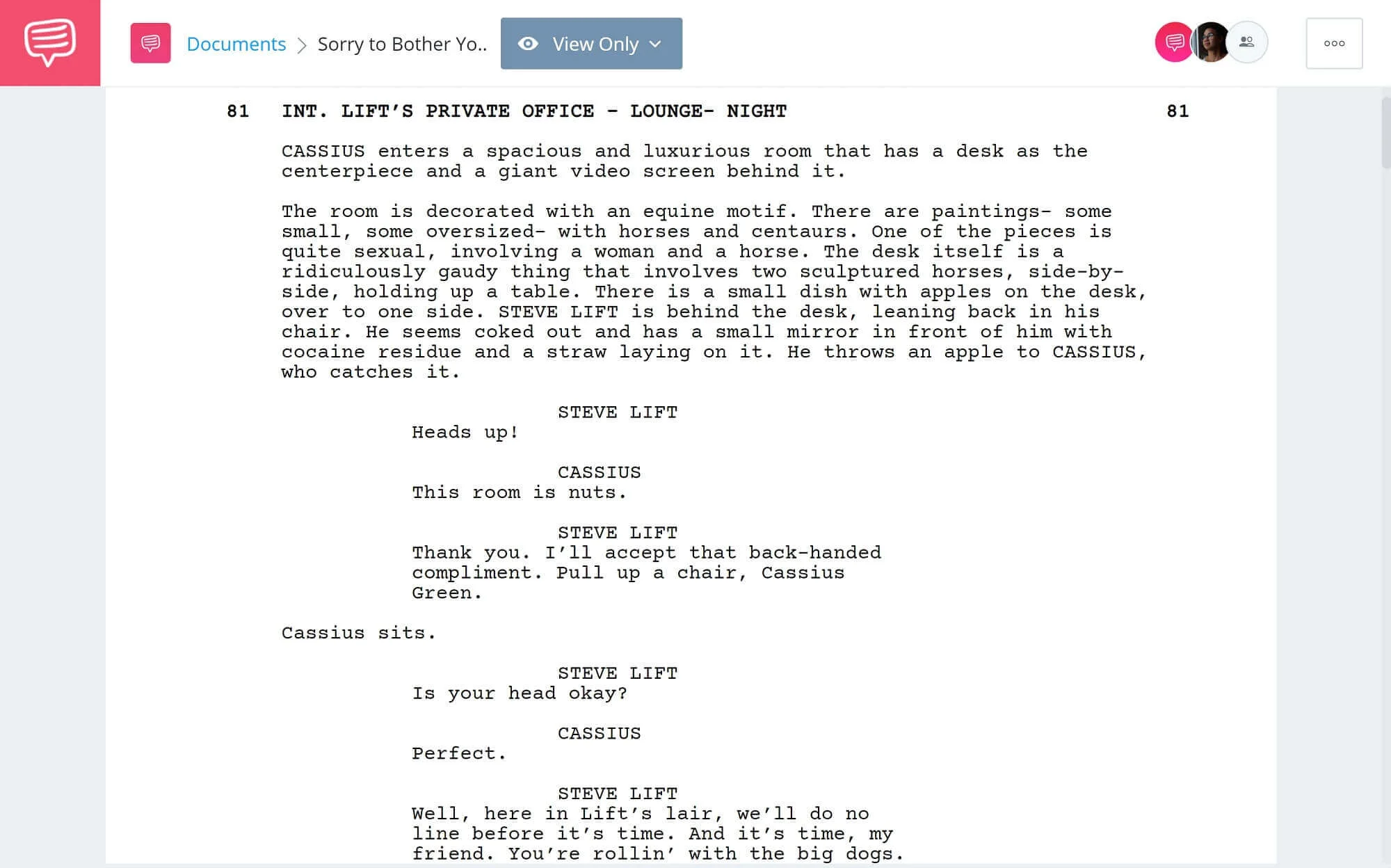Satire is one of the most useful tools writers can use to comment on the follies of humanity and the evils that exist in the world. We’re going to look at some satire examples in literature and movies to gain a better understanding of the term. By seeing how satire is used in a variety of mediums, we’ll be better prepared to apply it in our own projects. But first, let’s start by jumping through a portal to the past to see where satire began.
Etymology of Satire
Where did satire come from?
Long ago, circa 430s BCE, a young playwright named Aristophanes started to write stories that mocked popular leaders and conventions in ancient Athens. Aristophanes’ plays became widely known as Greek comedies; a new genre that sought to incite laughter rather than sadness like the tragedies before it.
This next video does a great job of explaining ‘the Greek comedy’ and one of its sub-groups, the Satyr.
Greek Comedy, Satyrs, and Aristophanes
It’s important to note that the term satire is derived from the Latin word satur, not the Greek satyr. Although satires and satyr plays share some similarities, such as a focus on absurdism and sexuality, they are not directly related.
So, what is an example of satire? Arsitophanes’ play Lysistrata is considered by many to be the first satire. The play follows a group of women who are fed up with the Peloponnesian war, so they withhold sex and money from their husbands in an attempt to incentivize them away from the battlefield. This play would be modernized as one of Spike Lee's best movies, Chi-raq.
Before we dive deeper into satire examples in literature and movies, let's take a minute to differentiate the types of satire and how they work.
Related Posts
Types of Satire
Breaking down the three branches
The three most common types of satire are Horatian, Juvenalian, and Menippean. Each of these "satiric modes" has distinct characteristics even though their main objective is similar.
Horatian Satire
Horatian satire is the least abrasive of the three types. The aim of a Horatian satire is to evoke comedy while critiquing the various follies of humanity. Horatian satire examples include:
- This is Spinal Tap
- Monty Python’s Life of Brian
- Saturday Night Live
Juvenalian Satire
Juvenalian satire is meant to inspire anger in the audience. Oftentimes it is aimed at an individual or an institution that the author deems evil. Juvenalian satire examples include:
- A Modest Proposal
- American Psycho
- A Clockwork Orange
Menippean Satire
Menippean satire strikes a balance between the previous two. It also uses exaggerated or extraordinary settings as a means of narrative abstraction. Menippean satire examples:
- Alice in Wonderland
- Cat’s Cradle
- Utopia
Now that we've covered the basic types of satire, let's look at some satire examples a little closer to see what exactly their aim is and how they use their various mediums to get there.
From Swift to Vonnegut
Satire examples in literature
Satire may have begun in Ancient Greece with Aristophanes, but it wasn’t widely popularized until the Age of Enlightenment with writers like Daniel Defoe, Jonathan Swift, and Alexander Pope. During this period, satires were especially searing, and generally directed at institutions like the Church or the Academy.
Take A Modest Proposal, or as the full title suggests A Modest Proposal For preventing the Children of Poor People From being a Burthen to Their Parents or Country, and For making them Beneficial to the Publick for example.
In this essay, Swift proposes that poor Irish people should sell their children to the upper-class for the following reasons:
- For money
- To decrease the number of hungry people
- To literally satiate the hunger of the upper-class
Did Swift really think that the poor should sell their children as cattle for the upper-class? No, of course not. But that’s not the point of satire. Satire is meant to expose a fundamental problem in our world at an individual or societal level.
With A Modest Proposal, Swift exposed the problem of famine and oppression that the Irish endured at the hands of the British.
Another satire writer who had an enormous impact on literature was John Wilmot, 2nd Earl of Rochester. Wilmot was a royal and a close friend of King Charles II of England. But if that makes you think that he was prim and proper, you’d be dead wrong. Wilmot, widely referred to as Rochester in the literary world, was a raucous partier and alcoholic. His writings reflected his personal sense of the libertine.
Rochester wrote many satires in his life but few were ever published under his name. Most of his works attacked conformity, rationalism, and social conventions. At the age of 33, Rochester died from complications due to alcoholism and venereal diseases.
Many writers used satire as a method of exposing problems within the world through the 18th and 19th century. Among these writers were Charles Dickens, Mark Twain, and George Orwell.
In the 1960s, American author Kurt Vonnegut released several stories and books with satirical elements. After the release of his novel Slaughterhouse Five, Vonnegut became renowned within the literary world. Slaughterhouse Five, Cat’s Cradle, and Slapstick all were acclaimed as brilliant contemporary satires.
This next clip does a tremendous job of succinctly demonstrating what Vonnegut thought of using satire to attack American politics.
Satire Examples in Literature • Kurt Vonnegut
Vonnegut often used a distortion of reality to build worlds for his satirical attacks. Take this excerpt from the clip above for example:
“This is the best of times and this is the worst of times, so what else is new? There is good news and then there is bad news tonight. The bad news is that the Martians have landed in New York City and they’ve checked in at the Waldorf. The good news is that they only eat homeless men, women, and children of all colors and they pee gasoline.”
What does Vonnegut suggest with this little story? To me, he’s exposing fear in the American public, fear of the unknown, fear of invasion, fear of losing control. But then he satirizes the fear-stricken by assuring them that the Martians offer no direct threat. Oh, and they just so happen to piss gasoline, which happens to help our finite resource chain.
If you’re looking for some other brilliant Horatian satire examples, check out Vonnegut’s Slapstick and Cat’s Cradle. Vonnegut’s best works expose the absurdity of societal conventions, usually in a comedic way.
Related Posts
Chaplin to Riley
Satire examples in movies
Perhaps the most iconic satirist in the history of cinema was Charlie Chaplin. His 1940 masterpiece The Great Dictator is widely viewed as one of the most important satire movies of the 20th century.
This next video shows how Chaplin went from a universally beloved silent-film star to an undeterred satirist who attacked Nazi Germany and Adolf Hitler. Satire movies don't get as bold and brave as this.
The Great Dictator • Political Satire Examples
So what’s so great about Chaplin’s speech in The Great Dictator? Why is the satire of the film so important? Well it starts with the fundamental problem of “what’s at stake.” The greater the stakes of a satire, the greater the reward — because every evil or folly exposed by a satirist becomes part of international discourse.
In The Great Dictator, the stakes couldn’t be greater. Hitler’s evil actions, and those who did nothing to stop them, were responsible for millions of innocent deaths. Chaplin rightfully couldn’t sit by and watch that continue to happen. But it wasn’t enough to outright say that Hitler’s actions were bad, he had to activate the minds of the people and show them the way to that conclusion on their own.
That’s exactly what he did with The Great Dictator.
Satire continued to grow within the film industry following The Great Dictator. By the 1970s, dozens of satire movies were being made all around the world, including in Italy (Divorzio all’italiana), France (Mon Oncle), and the U.S. (Bananas).
In 1976, director Sidney Lumet and screenwriter Paddy Chayefsky made Network — perhaps one of the most scathing satire movies in cinema history. Check out this next video to see how Network shows us how to write satire in screenplays.
Network • Satire Examples in Movies
Network is a film that shows us the ever-so-relevant corruption and misinformation in the TV news industry. Like the satire movies we looked at before, Network exposes a problem and then attacks the industry where it runs rampant.
How does Network attack the TV news industry though? Well it starts with Howard Beale, the protagonist of the film. After learning that he’s going to be fired due to poor ratings, Howard announces that he’s going to commit suicide live on air. What follows is a media circus in which TV viewers tune in to see what happens. This leads to a ratings boost and the resurrection of Howard’s career.
We imported the Network script into StudioBinder’s screenwriting software to see how Chayefsky used writing techniques to establish a satirical tone. Make sure to read the scene descriptions to see how Chayefsky introduces scene locations, characters, and props.
Network Examples of Satire • Read Full Scene
The satire may be saying that people are attracted to the idea of tragedy, the possibility that something unexpected is going to happen. Why does anybody tune into live shows of people walking on wires over volcanoes? Although most people wouldn’t admit it, it’s because there’s the rare chance that they’re going to fall in.
Blaxploitation films have also been heavily satirized by filmmakers. In the 1987 film Hollywood Shuffle, director Robert Townsend took a stand against the widespread blaxploitation films that were all over Hollywood. Let’s check out a clip to see how he does it:
Hollywood Shuffle • Types of Satire Examples
Notice anything about the production design of this scene? The costumes, the set dressing, the hair and makeup? This is the set of the film within the film; that is, the blaxploitation film set within Hollywood Shuffle that’s being satirized. Here Townsend exposes stereotyping and racism in the film industry and takes a stand by making his protagonist walk away with his pride.
One of the great modern examples of satire is Boots Riley’s 2018 film Sorry to Bother You. The picture is about Cassius Green, a young man who uses his “white voice” to literally rise up the ranks of business and society. He’s foiled by a man named Steve Lift, who has rather nefarious plans for increasing his work’s production capabilities.
Let’s take a look at a scene from the film’s screenplay to see how Boots Riley writes satire into dialogue and actions.
Modern Examples of Satire • Read Full Scene
From the moment Cassius walks into Steve’s office, we’re overwhelmed by horse-this, horse-that. It’s written into the scene description as well, “The room is decorated with an equine motif. There are paintings- some small, some oversized- with horses and centaurs.”
If you’re anything like me, you’re probably wondering, what’s up with all this horse stuff? Well fortunately, Riley explained his perspective on the horses and half-horse/half-people equisapiens in a conversation with Thrillist:
“I don't think [a horse] has really been done before in movies. And two, horses occupy a space of labor for us and it rings out in our lingo: Workhorse, working like a horse, horsepower. And then obedience, like: Dumb as a horse. Hung like a horse. I had a girlfriend at the time who was really into English riding and was really obsessed with horses and claimed it wasn't sexual. I'm not saying it's wrong that it was, but it was not recognized. That was part of where all that came from.”
Strangely enough, Sorry to Bother You wasn’t the first satire to use equisapiens to expose issues of forced labor and intelligence. Perhaps the most famous satire of all time, Gulliver’s Travels, also had equisapiens, although Jonathan Swift referred to them as Houyhnhnms.
In many ways, the use of animals as fabulist devices goes all the way back to Greek Satyr plays, which used mythical satyrs for comedic and metaphorical effect.
Satire Meaning
Why satire works
Satire allows us to comment on the world as we know it by activating the minds of the audience in an ironic way. Remember, the goal of every satirist is to expose a problem, evil, or folly of mankind, then attack the person or institution in which that belief is held.
Any and every medium for storytelling can be used to communicate satire, whether it be literature, visual art, motion pictures, or video games. By understanding how satire is used we can start to recognize the advanced use of irony in these mediums.
So just remember, satire is an invaluable tool at your disposal, but mastering it requires a lot of trial and error.
Related Posts
UP NEXT
Best Black Comedies
Black Comedies use satire to expose and ridicule serious topics in a comedic way. Over the years, there have been hundreds of black comedy movies. Some of the most famous ones are Dr. Strangelove, American Psycho, and The Big Lebowski. In this next article, we break down the best black comedies of all time. By the end, you’ll know how to apply satire in a whole new way.


